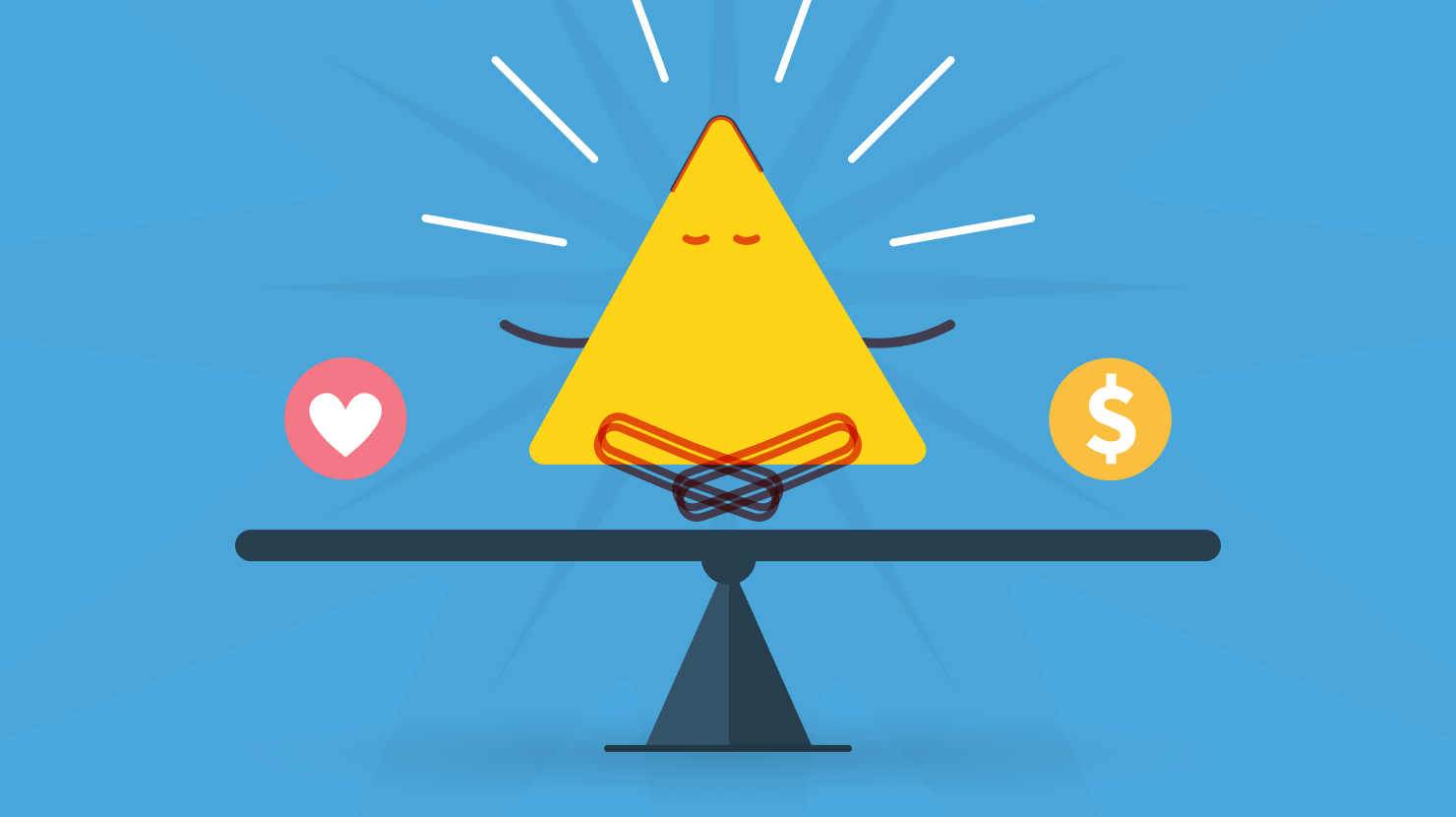4 min read

Even if you’re unfamiliar with the term work-life balance, you know intuitively what it means. It’s the balance between your work—commuting, projects, meetings, watercooler talk, your boss, stress—and the rest of your life—chores, appointments, playing with the kids, coffee with friends, feeding your cat, stress, a good book on the beach, pottery class, washing your car.
It’s also kind of a flawed concept.
According to Wikipedia, a perfect work-life balance describes the “point of equilibrium” at which your professional life, personal life, and family life aren’t interfering with one another. I’ve yet to experience this miracle myself so I can only presume that, when this is achieved, the heavens will open up and I’ll be bathed in a warm beam of light, signalling that I’ve become one with the cosmos. Finally, total spiritual enlightenment!
Jokes aside, the balance between work and “life” is constantly swinging back and forth, up and down, depending on the day, which means it’s impossible to achieve a perfect work-life balance.
Why? Because no matter how you slice it, the two sides of the coin aren’t actually two sides at all. They’re continually bleeding into each other. It happens in obvious ways like having to answer emails late at night on a Sunday, but also in ways that we might not immediately notice or even be able to detect. For example, a particularly stressful day at work can affect you for the rest of your night (or week), even if the time is evenly allocated and theoretically ‘balanced’.
But if a perfect balance can’t really be achieved, maybe a healthy balance can: a balance that takes into account the teeter-totter of our busy lives. This article’s all about what that might look like, and some ideas on how to get there.
A healthy work-life balance is less about balancing the time spent on work-related tasks and time spent on everything else. It’s really about learning how to manage stress—or, if you’re an employer, finding ways to minimize stress for your people. Because when we’re overworked or otherwise negatively impacted by our work, the physical and mental effects can be devastating to our lives outside of work.
Chronic stress can lead to hypertension, digestive troubles, chronic aches and pains, and heart problems. Burnout especially can lead to increased fatigue and a higher risk of depression. This creates a ripple effect that can impact you, your family and friends, and your working relationships.
The traditional concept of a work-life balance almost encourages us to compartmentalize our work-related stress, to relegate it to one of two oppositional spheres of life. This is why people say things like “I never take my work home with me.”
But I’d argue that mitigating stress requires more than simply creating compartments in your mind for work and not-work. After all, you may not take your work home with you, but sometimes it follows you there whether you like it or not.
Dealing with this means creating real boundaries and limits around what you take on, where you take it on, and how. It means finding a work schedule that minimizes that inevitable blending of work and not-work, and holding yourself to it.
Flexible working hours, remote work, and the freedom to create a schedule that works for your life, are all going to be crucial factors. Of course, this isn’t an option afforded to all of us. For whatever reason some employers are still resistant to the idea, even if it’s often to their own detriment.
Nevertheless, reports show that flexibility is good for both employees and employers, especially when it comes to achieving a healthy work-life balance. Since you probably know your work habits better than anyone, you know when (and why) you’re most productive and focused on work. Hint: it may not be 9 to 5! By formulating your own schedule that takes that into account, you’re creating real boundaries around your optimal and ideal working hours.
Nowadays technology gives us the ability to work around our own schedules instead of having to adapt our lives around work. This gives us some freedom to figure out what works best for us, day to day. Because the scale is going to tip in one direction or another, even if we plan ahead. The trick is to remain agile and be able to adapt to what life (and work) throws at you.
But it’s not just the conflict between work and not-work, or the lack of flexible hours that are contributing to the problem. Teena Clouston, Occupational Therapist at Cardiff University, notes that “there’s surprisingly little thought given to wider issues such as an increasing trend in modern life towards constant busyness and to be actively subsumed in ‘doing’ activities all of the time.”
Instead, we should be attending to the “being” in “wellbeing”. It means finding activities that are “personally meaningful and meet aesthetic needs, [like] participating in creative pursuits or connecting with nature by walking in the countryside, listening to the dawn chorus or just sitting on the beach and smelling the sea.”
Sometimes finding space to completely unwind and disconnect from professional and personal obligations is what we need most. And no, I don’t mean shirking responsibilities. I mean taking some time to unplug from the rat race that is modern life to recharge our batteries and just be.
Groovy, right?
The workplace can quickly turn into an environment in which overwork is not only prevalent but the expectation. When this happens, the work-life balance is tipped in a dangerous direction, causing people to rapidly burn out, and organizations to suffer as a result. Instead of striving for the unattainable equilibrium of total balance (complete with the radiant beam of light), we should think about our health and wellness, and how our routine can contribute to that.

Read more by
Corey Moseley
Jostle’s employee success platform is where everyone connects, communicates, and celebrates at work. Find out more at jostle.me. © 2009–2025 Jostle Corporation. All rights reserved.